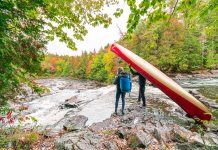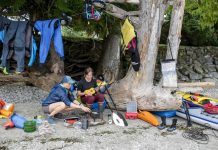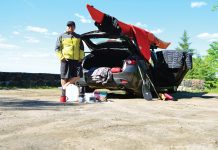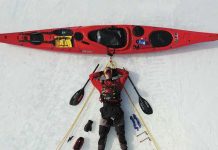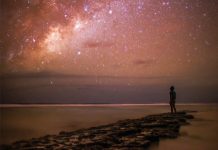When Tofino, British Columbia-based outdoor photographer Sander Jain packed for a stay of several weeks at a rustic, way-off-grid cabin in the remote rainforest reaches of Clayoquot Sound, his kit looked something like what you’d expect to find in a prepper’s basement. Canned foods, fuel, alternate energy sources, carbon-free transportation and, yes, toilet paper. “I had everything I needed,” says Jain, a strategic minimalist. “It was the ultimate luxury to experience remote living in a pristine wilderness area.
Packing for a basecamp—where I was dropped off by boat—I didn’t have to fit every piece of equipment into my kayak. I packed things in totes, so it felt more like a mini house moving. However, I avoided the urge to take as much as would fit. I always pack as minimalist as possible, to ensure my focus is on the experience itself, instead of material dependencies and distractions.
You can embark on an epic adventure without a big budget. I picked up a dated but reliable spare paddle, pump, float, PFD and spray skirt at various local kayak outfitters who support my adventures with smiles and anything they can spare of their old equipment.
I actually don’t own a kayak. Instead, I have friends who don’t paddle much anymore but are happy to see their kayaks in the water. My friend painted this aging Necky Tesla green years ago to keep it well camouflaged in the wilds. It needed a good scrub when I picked it up in his yard, but it was still perfectly oceangoing and steeped with its own rustic charm. I don’t worry much about style beyond how it affects function—I trust that the things we like will never be out of taste.
One of the biggest challenges of a long off- grid stay was figuring out how to charge my electronic devices—a DeLorme inReach satellite communicator, my usual camera gear, and a laptop for managing photo and video files. I tested a small solar panel and BioLite stove and came to the conclusion that they couldn’t keep all my devices charged, all the time. Finally, I embraced the minimalist philosophy. The only device I really needed was my communicator. For the others, I simply economized battery use.
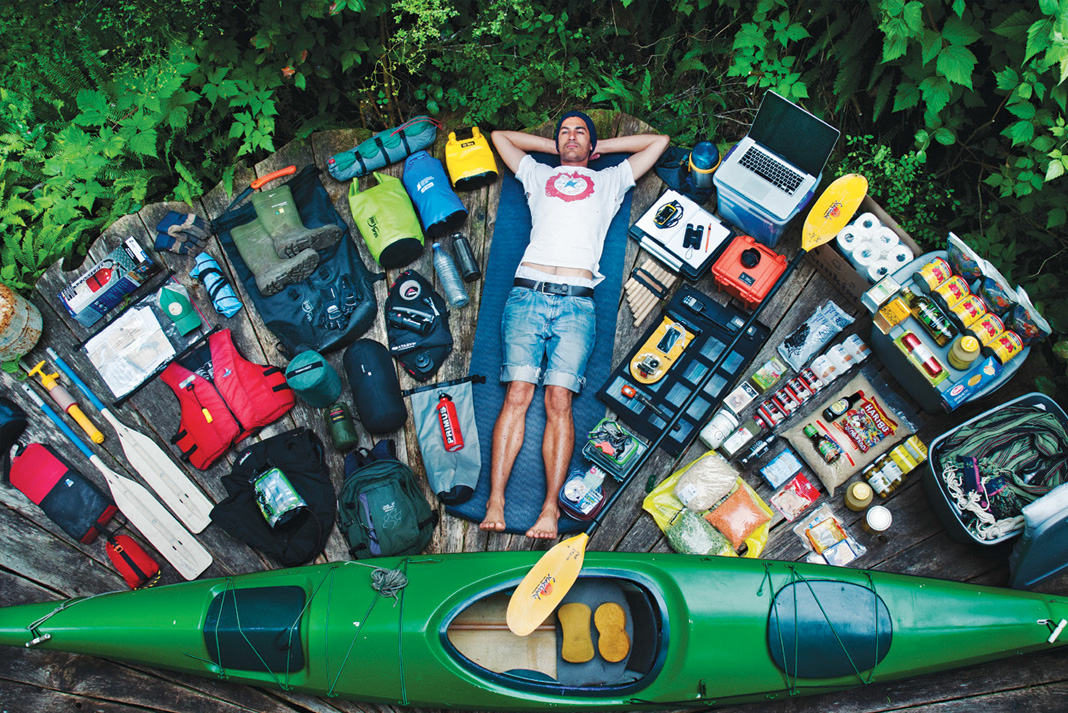
What’s In Sander Jain’s Basecamp Kit | Photo: Sander Jain
A five-kilogram bag of rice was a must. Rice is easy to pack, and pairs well with freshly caught fish for a nutritious meal. For breakfast, I packed three kilograms of oats, raisins and trail mix, along with canned coconut milk. A dozen other tinned foods and assorted seasonings rounded out my staples. The boat drop meant I could also treat myself to some fresh luxuries for the first week, including eggs, carrots, yams, oranges, apples, mangoes and avocados. I wasn’t too worried about starving.
Surviving and enjoying the wet weather and moist forests of the Pacific Northwest is less about trying to keep everything dry, and more about staying warm while learning to live with the moisture. Certain gear proved invaluable: my Dunlop Purofort boots, Helly Hansen rain pants, SealLine 70-liter backpack and various dry bags kept me comfortable and the most essential equipment dry.
Abrupt weather changes on Vancouver Island’s coast bring heavy fog, mist and rain, dramatically reducing visibility and increasing the challenge of navigating these waters. I relied on charts, compass, familiarity with local tides and constantly observing weather conditions.
Last but not least, I took along caution, attention and awareness, as well as my love of the natural world, wild places and kayaking.
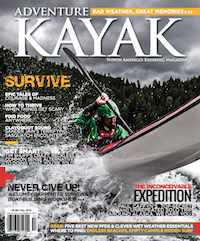 This article first appeared in the Fall 2015 issue of Adventure Kayak magazine.
This article first appeared in the Fall 2015 issue of Adventure Kayak magazine.
Subscribe to Paddling Magazine and get 25 years of digital magazine archives including our legacy titles: Rapid, Adventure Kayak and Canoeroots.



